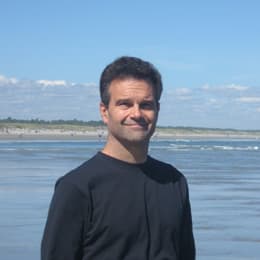Advertisement
Commentary
Horror movies are like fine art — the best ones endure

“It is one of those strange accidents of history that the best film ever made about the Roman Catholic Church was directed by a Jewish agnostic,” and stranger still that Catholic journalist Matthew Walther gave this New York Times rave to a horror movie.
Walther’s recent requiem to William Friedkin, the late director of “The Exorcist,” resonated with this Catholic. As a churchgoer, I treasure a tradition in decline. But wrestling with admitted doubts about the supernatural, I straddle tradition and the progressive belief that religion is really about justice and loving your neighbor. Therein lies Walther’s claim for “The Exorcist,” which premiered in 1973, as an art film: he writes, it “compelled modern-day viewers to reckon with a more traditional conception of religion, in all its otherworldly dimensions.” (While I’ll note here, the current reboot, “Exorcist: Believer,” strikes reviewers as both less horrific and less Catholic.
Upon its release, theologians disputed the original film’s fidelity to Catholic teaching, at a time when the church’s real-life demon of pedophilia skulked hidden from public sight. But calling it a religious film may generate fewer headwinds than Walter’s assertion that a horror movie can be art. Acquaintances who don’t share my fondness for the genre see it as silly or low-brow schlock, jump scares shouting “boo!” to make us wet ourselves. They disregard the fact that strumming fear, like guitars, separates maestros from amateurs. “Jaws” has been compared to “The Godfather” for mining visceral terror from the simple pleasure of a beach day.
Having enjoyed monster movies almost as long as sermons, the horror-as-art doubt is one I can dispel. Snooty cinephiles have ample choices to watch, or guiltily rewatch, this Halloween, and I don’t mean films fit only for the art-house crowd. They exist, but I prefer movies that combine serious themes, technique and acting with plots fathomable to non-philosophy majors.
Childhood experiences can program our adult tolerance for movie scares. Films from older, tamer times keep the fright volume lower. The IMDB’s must-see artsy horrors include two German silents, “Cabinet of Dr. Caligari” and “Nosferatu.” I’d add “The Body Snatcher.” This 1945 adaptation of Robert Louis Stevenson, familiar mostly to horror fans, stars Boris Karloff, whose better-known, star-making turn in “Frankenstein” also bears viewing by acting students.
Karloff’s titular snatcher is as thoroughly human as he is evil. He illegally obtains corpses for a respected medical school doctor, whom he scalds with reminders of their entwined criminality. Karloff creates, as The New Yorker’s former film critic noted, “a villain of near-Shakespearean heft and complexity: a monster of resentment, like Richard III, and a man who can do good only by doing bad.” When your name appears in the same sentence as “Shakespearean,” we’re not in B-movie Kansas anymore. A psychological study of guilt’s toll, “The Body Snatcher” can double your year-end serving of Karloff. (You do catch the cartoon Grinch every December, right?)
A family member once insisted that “Jaws” (and, by her logic, “The Body Snatcher”) isn’t a horror movie, since it lacks supernatural elements — until I reminded her that “Psycho” has no undead, either. Only fear of BO overcame my newfound terror of showering after my high school screened Hitchcock’s masterpiece. I prefer Karloff to slasher films, but the latter’s granddaddy has inspired academic reflection for Hitch’s applying “the art of pure cinema” — years before “Jaws” and “The Silence of the Lambs” — “to brilliantly manipulate the emotions and the expectations of the viewer.”
When your name appears in the same sentence as “Shakespearean,” we’re not in B-movie Kansas anymore.
Many of these aforementioned movies derive their husks of horror from kernels of reality. Life, tragically, has its deranged killers, desecrations of the dead and shark attacks. Director Jordan Peele’s “Get Out” hinges on racism. His 2017 debut recounts a Black photographer’s increasingly unnerving encounter with his white girlfriend’s family. That précis omits the film’s numerous nods to topical terrors: how a suburban stroll has proved lethal for some people of color, and the grim history of medical experimentation on, and white supremacist dominion over, African Americans.
Peale’s 2019 follow-up, “Us,” also packs philosophic depth and an arguably scarier punch, even granting the occasionally leaky analogy to real life in this parable of haves and have-nots. The film’s homicidal doppelgängers, representing the underprivileged, conceal their existence from society until their savage coming-out. Yet the panhandlers and unhoused on American sidewalks indict us precisely because their plight stares us in the face, while we walk by or vote for similarly indifferent leaders.
Amid these Halloween viewing choices, and goaded by Walther, I rewatched “The Exorcist” this month. Better attuned to its Catholic sensibility, I cringed at its smug doctors, pointlessly torturing the possessed Regan with medical jabbing and poking that can’t diagnose her. I noted the parallel suffering, mundane but intense, in the crisis of religious faith tormenting Jesuit Father Damien. Yet, facing literally Satanic proof of supernatural evil, Damien martyrs himself, Christ-like, to save her.
Chill-seekers can savor the film’s iconic scares: Regan’s owl-like revolving head, green vomit and shocking blasphemies. But attentive viewing corroborates Friedkin’s claim that its real takeaway is “the mystery of faith.” His film and others demonstrate how frights can don artistry as easily as children wear Halloween masks.
